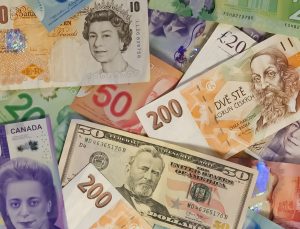The foreign exchange market, or forex, is the largest financial market in the world, with an average daily trading volume of over $5 trillion. In this market, traders buy and sell currencies with the aim of making a profit from the fluctuations in exchange rates. One important factor that influences these fluctuations is market sentiment, which refers to the overall mood or attitude of traders towards a particular currency or market. Sentiment can be either bullish or bearish, indicating optimism or pessimism respectively. In addition, sentiment can be categorized as either long or short, depending on the duration of the trader’s outlook.
In forex trading, long sentiment refers to a bullish outlook on a currency or market, with traders expecting prices to rise over a relatively long period of time. This type of sentiment is often associated with fundamental analysis, which involves examining economic indicators, news events, and other factors that can affect currency prices in the long run. For example, a trader who has a long sentiment towards the US dollar may do so because they believe that the economy is strong and will continue to grow, leading to an appreciation of the dollar over the next few months or years.
On the other hand, short sentiment refers to a bearish outlook on a currency or market, with traders expecting prices to fall over a relatively short period of time. This type of sentiment is often associated with technical analysis, which involves examining charts and other price data to identify trends and patterns. For example, a trader who has a short sentiment towards the euro may do so because they believe that the currency is overvalued and will soon experience a correction, leading to a decline in its value over the next few days or weeks.
Short sentiment can be influenced by a variety of factors, including economic indicators, news events, and technical factors such as support and resistance levels. For example, a negative economic report or geopolitical event may cause traders to adopt a short sentiment towards a particular currency, as they anticipate that it will lead to a decline in its value. Similarly, a technical analysis trader may identify a resistance level that they believe will hold, leading them to take a short position on the currency.
Short sentiment can be expressed in a variety of ways, including through the use of technical indicators, such as moving averages, oscillators, and trend lines. These tools can help traders identify trends and patterns in price data, and make informed decisions about when to enter or exit a trade. For example, a trader who identifies a bearish trend using a moving average may decide to take a short position on the currency, in anticipation of a further decline in its value.
In conclusion, short sentiment refers to a bearish outlook on a currency or market, with traders expecting prices to fall over a relatively short period of time. This type of sentiment is often associated with technical analysis, which involves examining charts and other price data to identify trends and patterns. Short sentiment can be influenced by a variety of factors, including economic indicators, news events, and technical factors such as support and resistance levels. Traders can express short sentiment in a variety of ways, including through the use of technical indicators, and can use this outlook to make informed decisions about when to enter or exit a trade.






